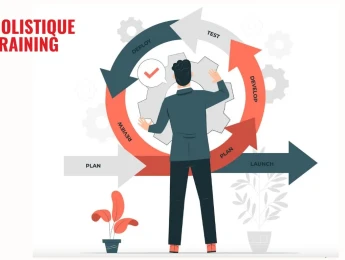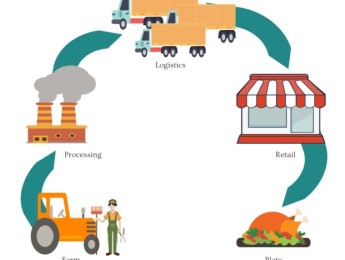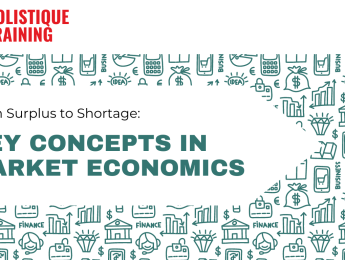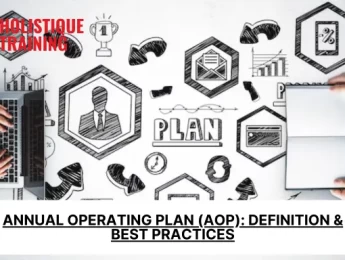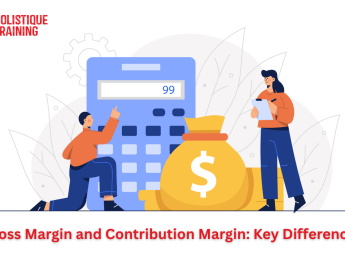- Table of Contents
- Introduction
- The History of Value Stream Mapping
- The Symbols Used in Value Stream Mapping
- Process Box
- Data Box
- Inventory Triangle
- Material Flow Arrow
- Information Flow Arrow
- Kaizen Burst
- Supplier and Customer Icons
- Push Arrow
- Pull Arrow
- Timeline
- Forklift Icon
- Production Control Icon
- Why is Value Stream Mapping Important?
- Identifies Waste
- Enhances Communication
- Improves Efficiency
- Supports Continuous Improvement
- Aligns Goals
- Facilitates Decision-Making
- Enhances Customer Satisfaction
- Reduces Costs
- Promotes a Lean Culture
- Enhances Flexibility and Responsiveness
- Case Study: Benefits of VSM
- Steps to Create a Value Stream Map
- Define the Scope
- Assemble a Team
- Collect Data
- Draw the Current State Map
- Identify Waste
- Propose Improvements
- Draw the Future State Map
- Develop an Action Plan
- Implement and Review
- Challenges of Value Stream Mapping
- Data Collection Difficulties
- Resistance to Change
- Complex Processes
- Time and Resource Constraints
- Sustaining Improvements
- Tool and Training Requirements
- Scope Creep
- Integration with Other Improvement Initiatives
- Value Stream Mapping vs. Process Mapping
- Value Stream Mapping:
- Process Mapping:
- How Value Stream Mapping is Used in Different Fields
- Manufacturing
- Healthcare
- Logistics and Supply Chain Management
- Software Development
- Conclusion
Introduction
Value Stream Mapping (VSM) is a powerful tool used to visualise and analyse the flow of materials and information needed to bring a product or service to the customer. It's not just about understanding the processes involved but about identifying inefficiencies and opportunities for improvement. By employing VSM, organisations can streamline operations, reduce waste, and improve overall performance. In this blog post, we will discuss the history of VSM, the symbols used, the steps to create a VSM, its importance, the challenges faced, a comparison with process mapping, and its applications in various fields.
The History of Value Stream Mapping
The roots of VSM can be traced back to the Toyota Production System (TPS), which revolutionised manufacturing processes in the mid-20th century. Toyota's focus was on creating a system that minimises waste and maximises efficiency, leading to the development of various lean manufacturing techniques. VSM emerged as a way to visualise these processes, providing a clear picture of the current state and identifying areas for improvement.
Initially, VSM was primarily used in manufacturing settings, but its principles and benefits quickly caught the attention of other industries. Today, VSM is utilised in various sectors, including healthcare, logistics, software development, and service industries, demonstrating its versatility and effectiveness in driving continuous improvement.
The Symbols Used in Value Stream Mapping
To effectively create and interpret VSM, it's essential to understand the standard symbols used. These symbols help convey complex information in a simple, visual format:
Process Box
- Symbol: A rectangle
- Meaning: Represents a step in the process where a specific activity or transformation occurs.
- Example: In a manufacturing context, a process box might represent an assembly line step, such as welding or painting. It could denote an action like processing a customer order in a service context.
Data Box
- Symbol: A rectangle placed beneath a process box
- Meaning: Provides additional information about the process step, such as cycle time, changeover time, uptime, and resource utilisation.
- Example: A data box might include details like “Cycle Time: 2 minutes” or “Changeover Time: 5 minutes,” giving deeper insights into each step's performance.
Source:Research Gate
Inventory Triangle
- Symbol: A triangle
- Meaning: Indicates where inventory is stored between processes, highlighting potential areas of excess stock or bottlenecks.
- Example: An inventory triangle might appear between two process steps, showing that parts are stored before moving to the next phase, such as raw materials waiting for machining.
Material Flow Arrow
- Symbol: A thick arrow
- Meaning: Shows the flow of materials between processes, illustrating the movement of physical items through the value stream.
- Example: In a factory, a material flow arrow might show the path from raw materials to final assembly. In a hospital, it could trace the journey of medical supplies from storage to patient care.
Information Flow Arrow
- Symbol: A thin arrow, often with a dotted or dashed line
- Meaning: Depicts the flow of information, such as orders, instructions, or communications, between different parts of the process.
- Example: An information flow arrow might indicate how customer orders are transmitted from a sales department to the production floor or how patient records are transferred from admission to treatment.
Kaizen Burst
- Symbol: A starburst or explosion shape
- Meaning: Highlights areas for improvement or specific actions to address inefficiencies, often used to mark opportunities for kaizen (continuous improvement) activities.
- Example: A kaizen burst might be placed near a process step with high defect rates, signalling the need for a targeted improvement initiative to reduce errors.
Supplier and Customer Icons
- Symbol: Simplified shapes, such as a factory for suppliers and a house or person for customers
- Meaning: Represent the start (supplier) and end (customer) points of the value stream, framing the entire process flow.
- Example: In a retail context, a supplier icon could represent a manufacturer providing goods, while a customer icon signifies the end consumer purchasing the product.
Push Arrow
- Symbol: A block arrow
- Meaning: Indicates a push system where products are moved to the next stage without a specific demand from that stage.
- Example: In manufacturing, a push arrow might show parts being moved to assembly regardless of whether the assembly line is ready for them.
Pull Arrow
- Symbol: A block arrow with a squiggly tail
- Meaning: Signifies a pull system where the next stage signals when it needs more products, promoting just-in-time production.
- Example: In a pull system, a pull arrow could represent an assembly line requesting parts only when current supplies are low, reducing overproduction.
Timeline
- Symbol: A line running horizontally at the bottom of the map
- Meaning: Provides a visual representation of the time taken for the entire value stream, including process time and wait time.
- Example: A timeline might show that the total lead time for a product is 10 days, with 7 days spent in process steps and 3 days in waiting.
Forklift Icon
- Symbol: A small image of a forklift
- Meaning: Indicates material handling or movement by forklift, often used in manufacturing and warehousing.
- Example: This icon might be placed where pallets are moved from storage to production lines.
Production Control Icon
- Symbol: A circle with a ‘P’ inside
- Meaning: Denotes the point of production control, where scheduling and order release occur.
- Example: In a factory setting, this icon might mark the scheduling department that releases work orders to the production floor.
These symbols collectively create a detailed and easily interpretable map of the entire value stream, helping teams visualise and understand the flow of materials and information. Organisations can use these standardised symbols to ensure that their VSMs are consistent, comprehensive, and actionable, facilitating effective communication and continuous improvement.
Why is Value Stream Mapping Important?
The importance of VSM lies in its ability to provide a clear, visual representation of processes, making it easier to identify and eliminate waste. Here are some key reasons why VSM is crucial:
Identifies Waste
In the context of VSM, waste refers to any activity that does not add value to the final product or service from the customer's perspective. By mapping out the entire process, VSM helps identify various forms of waste, including:
- Overproduction: Producing more than is needed or before it is needed.
- Waiting: Idle time when resources are not being utilised effectively.
- Transport: Unnecessary movement of materials or products.
- Over-processing: Doing more work than is required by the customer.
- Inventory:Excess products or materials not being processed.
- Motion: Unnecessary movement by people.
- Defects: Errors that require rework or result in scrap.
By identifying these wastes, organisations can take targeted actions to eliminate them, thereby streamlining operations and reducing costs.
Enhances Communication
VSM provides a clear, visual representation of processes, making it easier for team members to understand the workflow. This visual clarity promotes better communication among team members, managers, and stakeholders. When everyone has a shared understanding of the process, it facilitates more effective collaboration and problem-solving. Additionally, the visual nature of VSM makes it easier to explain complex processes to new employees or stakeholders who may not be familiar with the intricacies of the workflow.
Improves Efficiency
One of VSM's primary goals is to improve efficiency by highlighting inefficiencies and bottlenecks in the process. By mapping out the current state and identifying areas for improvement, organisations can streamline workflows, reduce cycle times, and enhance overall productivity. For example, if VSM reveals that a particular process step is causing delays, the team can focus on optimising that step, perhaps by reallocating resources, automating tasks, or simplifying procedures.
Supports Continuous Improvement
VSM is not a one-time activity but a tool for ongoing improvement. It fosters a culture of continuous improvement by encouraging teams to regularly review and refine their processes. By continuously updating the value stream map and seeking new ways to eliminate waste and enhance efficiency, organisations can maintain a competitive edge and adapt to changing market conditions. This commitment to continuous improvement also helps to engage employees, as they see their contributions leading to tangible improvements in the organisation.
Aligns Goals
VSM helps ensure all team members align with the organisation’s goals. By providing a clear picture of how each process contributes to the overall value stream, VSM helps employees understand their roles and responsibilities within the larger context. This alignment ensures that everyone is working towards the same objectives, reducing the risk of miscommunication and conflicting priorities. Additionally, by involving employees in the VSM process, organisations can foster a sense of ownership and accountability, further enhancing alignment and commitment to the organisation's goals.
Facilitates Decision-Making
The insights gained from VSM provide valuable information that supports data-driven decision-making. By clearly identifying bottlenecks, waste, and areas for improvement, VSM enables managers to make informed decisions about where to allocate resources, how to prioritise improvement efforts, and what changes will significantly impact performance. This strategic decision-making process helps organisations achieve their goals more efficiently and effectively.
Enhances Customer Satisfaction
Ultimately, VSM helps improve customer satisfaction by ensuring that processes are as efficient and effective as possible. By eliminating waste and streamlining operations, organisations can deliver products and services faster, with higher quality, and at a lower cost. This focus on continuous improvement and efficiency translates into better value for customers, leading to increased satisfaction and loyalty.
Reduces Costs
By identifying and eliminating waste, VSM helps organisations reduce costs across various areas of their operations. For example, reducing overproduction can decrease inventory holding costs, while streamlining workflows can minimise labour expenses. These cost savings can be reinvested in other business areas, such as innovation, employee development, or customer service, further enhancing the organisation’s competitive advantage.
Promotes a Lean Culture
VSM is a core component of Lean methodology, which emphasises creating more value for customers with fewer resources. By adopting VSM, organisations promote a Lean culture that focuses on continuous improvement, efficiency, and waste elimination. This Lean mindset encourages employees at all levels to actively seek out and implement improvements, fostering a culture of innovation and excellence.
Enhances Flexibility and Responsiveness
In today’s fast-paced business environment, organisations need to be flexible and responsive to changes in market demand, customer preferences, and competitive pressures. VSM helps organisations identify areas where processes can be streamlined and made more agile, enabling them to respond more quickly to changes. For example, organisations can better adapt to fluctuations in customer demand and market conditions by reducing lead times and improving workflow efficiency.
In short, Value Stream Mapping is a vital tool for organisations looking to optimise their processes, reduce waste, and improve overall efficiency. By providing a clear, visual representation of the value stream, VSM enhances communication, supports continuous improvement, aligns team goals, and facilitates informed decision-making. Its impact on cost reduction, customer satisfaction, and fostering a Lean culture makes VSM an indispensable asset in any organisation’s toolkit for achieving operational excellence and maintaining a competitive edge in the marketplace.
Steps to Create a Value Stream Map
Creating a VSM involves several steps, each designed to build a comprehensive understanding of the process and identify areas for improvement. Here are the nine steps to create an effective VSM:
Define the Scope
- Determine Boundaries: Clearly define the start and end points of the value stream you want to map. This could be an organisation's specific product line, service, or process.
- Focus Area: Decide whether you will map the entire value stream or a specific segment. For example, you might choose to focus on the production process, order fulfilment, or customer service.
Defining the scope ensures that your VSM is manageable and focused on a specific area that needs improvement. It also helps in setting clear objectives and expectations for the mapping process.
Assemble a Team
- Cross-Functional Representation: Gather a team that includes individuals from different departments and functions involved in the process. This could include production workers, managers, quality control personnel, and support staff.
- Diverse Perspectives: Ensure the team includes people directly involved in the day-to-day operations and those with a broader strategic view. This diversity of perspectives can provide valuable insights and lead to more comprehensive improvements.
A cross-functional team brings together various viewpoints and expertise, ensuring that all aspects of the value stream are considered and that the resulting map is accurate and actionable.
Collect Data
- Observation and Measurement: Visit the workplace and observe the process in action. Collect data on cycle times, inventory levels, lead times, changeover times, and other relevant metrics.
- Interviews and Discussions: Talk to employees who perform the tasks to get their input on the actual workflow and any challenges they face. Their firsthand experience is invaluable for understanding the process's nuances.
Accurate data collection is critical for creating a reliable VSM. Ensure that the data reflects the current state of the process and covers all relevant aspects, including material and information flows.
Draw the Current State Map
- Visual Representation: Using the collected data, create a visual representation of the current process. Include all relevant process steps, inventory points, and information flows.
- Use Standard Symbols: To ensure clarity and consistency, use standard VSM symbols, such as process boxes, inventory triangles, material flow arrows, and information flow arrows.
The current state map provides a baseline for understanding the existing process and identifying areas of waste and inefficiency. It serves as a starting point for developing improvement strategies. Here’s an example of a value stream map:
Source:Research Gate
Identify Waste
- Analyse the Map: Review the current state map to identify areas where waste occurs, such as excess inventory, long wait times, redundant steps, or inefficient workflows.
- Types of Waste: Look for common types of waste, including overproduction, waiting, transport, over-processing, inventory, motion, and defects.
Identifying waste is a crucial step in the VSM process. By pinpointing specific areas of inefficiency, you can develop targeted improvement initiatives to address these issues and enhance overall process performance.
Propose Improvements
- Brainstorm Solutions: Collaborate with the team to brainstorm potential improvements for the identified waste areas. Encourage creative thinking and consider various approaches, such as process simplification, automation, or reallocation of resources.
- Evaluate Feasibility: Assess the feasibility and potential impact of the proposed improvements. Consider factors such as cost, time, resource availability, and potential benefits.
Proposing improvements involves developing practical solutions to eliminate waste and enhance efficiency. This collaborative approach ensures that the team is engaged and invested in the improvement process.
Draw the Future State Map
- Vision for Improvement: Create a new map that reflects the proposed improvements and represents the desired future state of the process. Ensure that the future state map addresses the identified inefficiencies and outlines a more streamlined and efficient workflow.
- Include Key Metrics: Incorporate key metrics and performance indicators in the future state map to track progress and measure the impact of the improvements.
The future state map serves as a target for the team to work towards. It provides a clear vision of the optimised process and guides the implementation of improvement initiatives.
Develop an Action Plan
- Implementation Steps: Outline the specific steps needed to implement the proposed improvements. Break down the action plan into manageable tasks and assign responsibilities to team members.
- Set Timelines: Establish realistic timelines and milestones for completing each task. Ensure that the action plan includes regular checkpoints to monitor progress and address any challenges that arise.
A well-defined action plan is essential for successful implementation. It ensures that the team has a clear roadmap to follow and that responsibilities and timelines are clearly communicated.
Implement and Review
- Execution: Implement the action plan and implement the proposed improvements. Ensure that the team follows the plan and adheres to the established timelines.
- Continuous Monitoring: Continuously monitor the process to track progress and measure the impact of the improvements. Use key metrics and performance indicators to assess the effectiveness of the changes.
- Regular Review: Schedule regular reviews to evaluate the VSM and identify any new inefficiencies or areas for further improvement. Update the value stream map as needed to reflect ongoing changes and ensure continuous improvement.
Implementation and review are critical for sustaining improvements and ensuring that the process remains efficient and effective. Regular monitoring and review help maintain momentum and foster a culture of continuous improvement.
In summary, creating a Value Stream Map is a systematic process that involves defining the scope, assembling a cross-functional team, collecting accurate data, and visualising the current state. By identifying waste, proposing improvements, and developing a future state map, organisations can create a clear action plan for enhancing efficiency and reducing waste. Implementing and regularly reviewing the VSM ensures that the improvements are sustained and that the organisation optimises its processes. This structured approach to VSM enhances operational efficiency and fosters a culture of continuous improvement and collaboration, driving long-term success and competitiveness.
Challenges of Value Stream Mapping
While VSM is a powerful tool, it is not without its challenges. Some of the common difficulties organisations may face when implementing VSM include:
Data Collection Difficulties
- Inaccurate Data: Collecting accurate data is crucial for creating a reliable VSM. However, inaccuracies can occur due to human error, outdated information, or incomplete records. This can lead to incorrect conclusions and ineffective improvement strategies.
- Data Overload: Gathering detailed data can be overwhelming. Numerous metrics, such as cycle times, inventory levels, and wait times, must be considered, and the sheer volume of information can make it challenging to focus on the most critical areas.
To address these difficulties, it’s important to establish clear data collection protocols, train team members on accurate data recording, and prioritise key metrics that will have the most significant impact on the value stream.
Resistance to Change
- Employee Reluctance: Employees may resist VSM initiatives due to fear of change, scepticism about the benefits, or concern over increased workload. This resistance can hinder the mapping process and the implementation of improvements.
- Cultural Barriers: Organisational culture that is resistant to change or lacks a continuous improvement mindset can pose a significant barrier to the successful adoption of VSM.
Overcoming resistance to change requires effective communication, involving employees in the process, demonstrating the benefits of VSM, and fostering a culture of continuous improvement. Leadership support is also crucial in driving change and encouraging employee buy-in.
Complex Processes
- High Complexity: Some processes are highly complex, with numerous steps, interactions, and dependencies. Mapping these processes accurately can be challenging and time-consuming.
- Interdependencies: Processes that are interconnected with other value streams or rely on external factors can complicate the mapping effort and require a broader perspective.
It’s helpful to break down the value stream into smaller, more manageable segments to manage complex processes. Focus on key areas first and gradually expand the scope of the VSM to include additional process steps and interdependencies.
Time and Resource Constraints
- Limited Time: Creating a detailed VSM requires a significant investment of time, which can be challenging for organisations with tight schedules and deadlines.
- Resource Allocation: Allocating the necessary resources, including personnel and tools, to conduct a thorough VSM can be difficult, especially in resource-constrained environments.
Addressing time and resource constraints involves careful planning, prioritising VSM efforts based on potential impact, and securing leadership support to allocate the necessary resources. Streamlining the VSM process and focusing on critical areas can also help manage time constraints.
Sustaining Improvements
- Short-Term Focus: Organisations may struggle to maintain the momentum of VSM initiatives, leading to short-term improvements that are not sustained over the long term.
- Lack of Follow-Up: Without regular monitoring and follow-up, initial improvements may not be maintained, and processes can revert to their previous state.
Sustaining improvements requires a commitment to continuous monitoring and review. Establishing regular follow-up meetings, tracking key performance indicators, and fostering a culture of continuous improvement can help ensure that VSM initiatives have lasting impact.
Tool and Training Requirements
- Tool Proficiency: Effective VSM requires familiarity with specific tools and techniques, such as standard symbols and mapping software. Lack of proficiency in these tools can hinder the mapping process.
- Training Needs: Ensuring that team members are adequately trained in VSM principles and techniques is essential for success. However, providing comprehensive training can be time-consuming and costly.
Investing in training and development for team members is critical for overcoming these challenges. Providing access to VSM tools, offering training sessions, and creating opportunities for hands-on practice can enhance proficiency and confidence in the VSM process.
Scope Creep
- Expanding Scope: There is a risk of the VSM project expanding beyond its initial scope, leading to increased complexity and resource demands. This can dilute the focus and effectiveness of the initiative.
- Unclear Boundaries: Without clear boundaries, the VSM effort can become unfocused, attempting to address too many areas at once.
To manage scope creep, it’s important to clearly define the boundaries of the VSM project at the outset and regularly review progress to ensure that the team stays focused on the defined scope. Setting clear objectives and priorities can help maintain focus and prevent scope expansion.
Integration with Other Improvement Initiatives
- Alignment Issues: Integrating VSM with other improvement initiatives, such as Lean, Six Sigma, or TotalQuality Management, can be challenging if there is a lack of alignment or coordination.
- Conflicting Priorities: Different improvement initiatives may have conflicting priorities or methodologies, leading to confusion and inefficiencies.
To address these challenges, it’s important to ensure alignment and coordination between VSM and other improvement initiatives. Establishing a unified approach and clear communication channels can help integrate VSM with other methodologies and ensure that efforts are complementary rather than conflicting.
While Value Stream Mapping is a powerful tool for identifying inefficiencies and improving processes, it comes with its own set of challenges. Addressing these challenges requires careful planning, effective communication, and a commitment to continuous improvement. By proactively managing data collection difficulties, overcoming resistance to change, dealing with complex processes, and addressing time and resource constraints, organisations can successfully implement VSM and achieve significant improvements in their operations. Sustaining these improvements through regular monitoring, follow-up, and alignment with other improvement initiatives ensures that the benefits of VSM are long-lasting and contribute to the organisation’s overall success.
Value Stream Mapping vs. Process Mapping
While VSM and process mapping share similarities, they serve different purposes and provide unique insights. Understanding the differences between the two can help organisations choose the right tool for their needs.
Value Stream Mapping:
- Focuses on the entire value stream, from suppliers to customers.
- Emphasises identifying and eliminating waste to improve overall efficiency.
- Provides a holistic view of the process, including material and information flows.
Process Mapping:
- Concentrates on individual processes or tasks within a value stream.
- Aims to document and understand the steps involved in a specific process.
- Useful for detailed analysis of specific areas, but may not provide a comprehensive view of the entire value stream.
Both tools are valuable, but VSM is particularly useful for organisations looking to improve overall efficiency and streamline their operations.
How Value Stream Mapping is Used in Different Fields
The versatility of VSM makes it applicable across various industries. Here are some examples of how VSM is used in different fields:
Manufacturing
- Production Efficiency: In manufacturing, VSM is commonly used to streamline production processes, reduce cycle times, and improve overall efficiency. Manufacturers can identify bottlenecks, eliminate redundant steps, and optimise resource allocation by mapping out the entire production line.
- Inventory Management: VSM helps in reducing excess inventory and managing just-in-time (JIT) production systems. By visualising the flow of materials, manufacturers can better coordinate supply with demand and minimise holding costs.
Example: A car manufacturer might use VSM to map the assembly line, identify areas where delays occur, and implement changes to reduce wait times and increase throughput.
Healthcare
- Patient Flow: In healthcare, VSM is used to improve patient flow through various departments, such as emergency rooms, outpatient clinics, and surgical units. By mapping the patient journey, hospitals can reduce wait times, streamline admissions and discharge processes, and enhance patient care.
- Process Standardisation: VSM helps healthcare providers standardise procedures, ensuring consistent and high-quality care. It can also identify inefficiencies in administrative processes, such as billing and scheduling, to improve overall operational efficiency.
Example: A hospital might use VSM to map the patient flow in the emergency department, identifying steps that cause delays and implementing improvements to reduce wait times and enhance patient satisfaction.
Logistics and Supply Chain Management
- Streamlined Operations: In logistics and supply chain management, VSM is used to optimise the movement of goods from suppliers to customers. By mapping the entire supply chain, companies can identify inefficiencies, reduce lead times, and improve coordination between different stages of the supply chain.
- Cost Reduction: VSM helps logistics providers minimise transportation costs, reduce excess inventory, and improve order fulfilment accuracy. It also enables better shipment tracking and more efficient resource use.
Example: A logistics company might use VSM to map the process of shipping goods from a warehouse to retail stores, identifying areas where delays occur and implementing changes to reduce lead times and improve delivery accuracy.
Software Development
- Agile and Lean Practices: In software development, VSM is used to enhance agile and lean practices. By mapping the development process, teams can identify bottlenecks, reduce waste, and improve the flow of work through the development pipeline.
- Continuous Improvement: VSM helps software development teams continuously improve their processes, from initial requirements gathering to final deployment. It supports iterative development cycles and enables better collaboration among team members.
Example: A software development team might use VSM to map the process of developing a new feature, identifying steps that cause delays and implementing changes to streamline the workflow and improve the speed of delivery.
Conclusion
Value Stream Mapping is a powerful tool that significantly improves efficiency, productivity, and overall performance across various industries. By providing a clear, visual representation of processes, VSM helps organisations identify and eliminate waste, streamline operations, and foster a culture of continuous improvement. While there are challenges to implementing VSM, the benefits far outweigh the difficulties, making it a valuable addition to any organisation's toolkit. Whether in manufacturing, healthcare, logistics, software development, or service industries, VSM offers a proven method for unlocking efficiency and enhancing productivity.
To master the intricacies of VSM and drive your organisation's continuous improvement efforts, consider enrolling in our course "Aiming for Continuous Improvement." This course will provide you with the skills and knowledge needed to implement VSM effectively and achieve lasting operational excellence.


